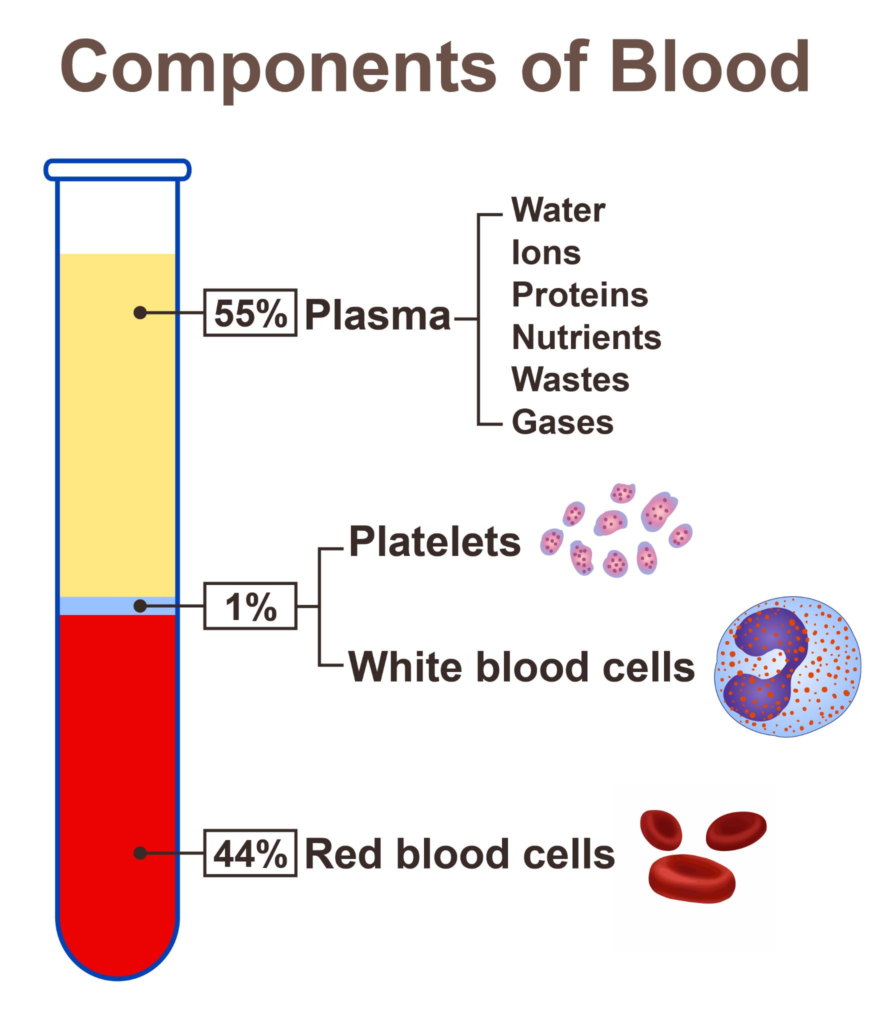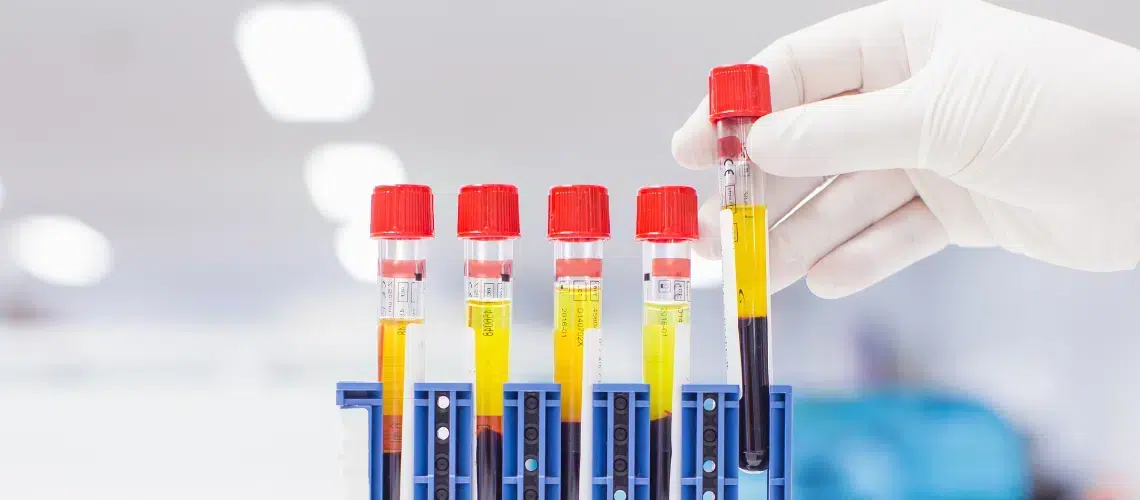When undergoing blood tests, accuracy is crucial for obtaining reliable results. However, one common issue that can compromise test accuracy is hemolysis, the breakdown of red blood cells. Understanding hemolysis, its causes, and how to prevent it can significantly improve the reliability of your blood test results. In this guide, we’ll explore the components of blood, how hemolysis affects test results, the common causes of hemolysis, and, most importantly, tips on how to prevent it to ensure the integrity of your Homed-IQ blood sample.
Table of Contents
- The components of blood
- What is hemolyzed blood and how does it affect blood test results?
- Causes of Hemolysis
- How are hemolyzed blood samples detected in the lab (Pre-analytical – Outside the Body)?
- Signs and Symptoms of Hemolysis (Biological/Clinical – Inside the Body)
- How can I stop my blood sample from hemolyzing (Pre-analytical – Outside the Body)?
- What happens if my blood sample is hemolyzed?: Testing with Homed-IQ
- Summary
The components of blood
While blood may appear as a red liquid to the naked eye, it is made up of four main components, each with an important role in maintaining your health. Blood consists of:
- Red blood cells: Carry oxygen to tissues and remove carbon dioxide.
- White blood cells: Form a key part of the immune system, defending the body against infections.
- Platelets: Help in blood clotting and wound healing.
- Plasma: A yellowish fluid that transports nutrients, hormones, and waste products throughout the body.
Source: ASH, 2023.

What is hemolyzed blood and how does it affect blood test results?
When red blood cells hemolyze, they burst and release their contents into the blood plasma. These contents include hemoglobin and other substances. If blood plasma is contaminated with the contents of red blood cells, measurement of certain biomarkers can be impacted, causing an inaccurate test result (Wan Azman at el., 2019).
Causes of Hemolysis
Read on to learn the most common causes of hemolysis:
| Category | Causes of Hemolysis |
|---|---|
| Pre-analytical (Outside the Body – Sample/Lab Related) | • Incorrect needle size, excessive suction, or prolonged tourniquet use during blood draw • Difficult or traumatic venipuncture • Improper tube mixing or incorrect filling of tubes • Vigorous shaking, rough transport, or exposure to extreme temperatures • Delayed processing or prolonged storage before analysis |
| Biological/Clinical (Inside the Body – Patient Related) | • Inherited red blood cell disorders: sickle cell anemia, thalassemia, G6PD deficiency, pyruvate kinase deficiency, hereditary spherocytosis, hereditary elliptocytosis • Immune-mediated causes: autoimmune hemolytic anemia (cold and warm types), paroxysmal cold hemoglobinuria, paroxysmal nocturnal hemoglobinuria; secondary to lupus, rheumatoid arthritis, leukemia, lymphoma • Infections: malaria, babesiosis, Carrion’s disease, Rocky Mountain spotted fever, Haemophilus influenza, HIV • Drug-induced hemolysis: rare reactions to medications such as penicillin, cephalosporins, rifampin, quinidine, sulfonamides, and others • Pregnancy-related complications: HELLP syndrome, preeclampsia, eclampsia • Medical interventions: hemodialysis, cardiopulmonary bypass, heart valve replacements, intra-aortic balloon pumps, Impella devices, blood transfusions • Toxins and poisons: arsenic, copper, lead, arsine, stibine, snake venom • Other conditions: hypersplenism (overactive spleen), severe hypertension causing mechanical red cell damage |
Source: Cleveland Clinic, 2022; Azman W., 2019
How are hemolyzed blood samples detected in the lab (Pre-analytical – Outside the Body)?
Hemolyzed blood samples are detected in the lab by preparing the sample and centrifuging it to separate the blood components. The liquid portion, called serum, is then examined for a red or pink color, which indicates the presence of hemoglobin released from ruptured red blood cells. Laboratory technicians compare the serum color to a hemolytic index chart to determine if it matches the color of hemolyzed samples. If the sample is hemolyzed, it will be rejected for analysis.
Source: CDC, 2024

Source: CDC, 2024
Signs and Symptoms of Hemolysis (Biological/Clinical – Inside the Body)
When hemolysis is due to Biological/Clinical (Inside the Body – Patient Related) causes, symptoms depend on how many red blood cells are destroyed. Mild hemolysis may cause no symptoms, but as oxygen delivery decreases, signs can appear.
Common symptoms:
- Fatigue and dizziness
- Pale skin
- Rapid heartbeat (tachycardia)
- Shortness of breath
- Jaundice (yellowing of skin/eyes)
- Enlarged spleen (splenomegaly)
Source: Cleveland Clinic, 2022
How can I stop my blood sample from hemolyzing (Pre-analytical – Outside the Body)?
Following the test instructions closely is the best way to prevent hemolysis in your blood sample:
- Warm up your hands before collection and carefully extract the blood into the collection tube.
- Avoid “milking” the finger to force blood out, as this can cause hemolysis.
- Use the right lancet size for finger prick collection to minimize tissue damage.
- Massage the base of your finger to stimulate blood flow, instead of pressing directly on the fingertip. If you’re struggling to collect enough blood, use another lancet and prick a different finger.
- Gently invert the sample tube to mix the blood with the preservative. Avoid shaking too hard to prevent hemolysis.
- Protect the sample from temperature extremes and keep it at a stable temperature to avoid hemolysis.
- Mail the sample as soon as possible after collection to minimize the risk of hemolysis or coagulation.
- Activate your test before mailing to avoid delays in processing and ensure timely analysis.
For more detailed tips on how to have a successful blood sample, see our Blood Collection Tips page. Would you like to see an example of how to collect the sample? View the instruction video here.
What happens if my blood sample is hemolyzed?: Testing with Homed-IQ
Laboratory technicians check all blood samples for hemolysis and will request for the sample to be repeated if evidence of hemolysis occurs. If your Homed-IQ blood sample is hemolyzed, you will receive an error message that the test result was insufficient. You will then have the opportunity to request a replacement test free of charge.
Summary
Hemolysis, the rupture of red blood cells, can lead to inaccurate test results by contaminating the plasma with substances like hemoglobin. This contamination can interfere with the measurement of biomarkers and result in faulty readings. Hemolysis can occur due to improper blood collection, mishandling during transport, or prolonged storage. By following proper collection techniques, carefully handling the sample, and mailing it promptly, you can significantly reduce the risk of hemolysis. If hemolysis does occur, you can contact Homed-IQ for a replacement test and receive guidance on how to successfully collect a new sample. By taking these precautions, you help ensure that your blood test results are accurate and reliable.
References
American Society of Hematology. (2021). Hematology Glossary. Hematology.org. https://www.hematology.org/education/patients/blood-basics#:~:text=It%20has%20four%20main%20components,to%20prevent%20excess%20blood%20loss
Azman, W., Omar, J., Koon, T. H., & Ismail, T. N. M. T. (2019). Hemolyzed Specimens: Major Challenge for Identifying and Rejecting Specimens in Clinical Laboratories. Oman Medical Journal, 34(2), 94–98. https://doi.org/10.5001/omj.2019.19
Centers for Disease Control and Prevention. (2024, May 14). Reference tool to determine hemolysis status. CDC. Retrieved August 21, 2025, from https://www.cdc.gov/vector-borne-diseases/php/laboratories/reference-tool-for-hemolysis-status.html
Cleveland Clinic. (2022, August 15). Hemolysis: Types, Causes & Symptoms. In Health Library. Cleveland Clinic. Retrieved August 21, 2025, from https://my.clevelandclinic.org/health/diseases/24108-hemolysis



